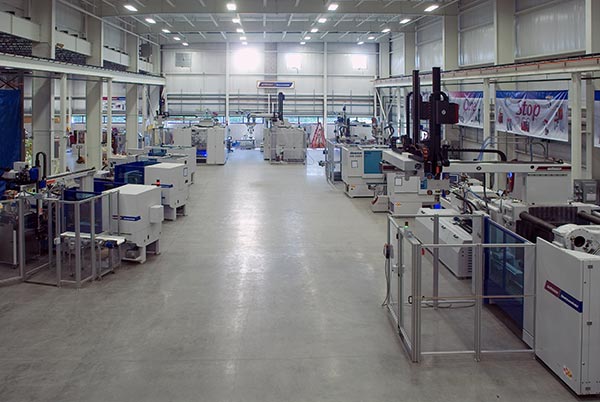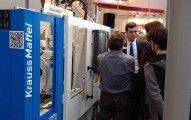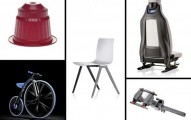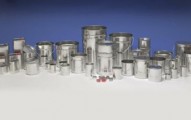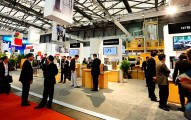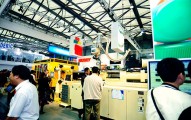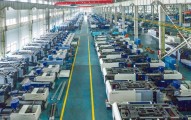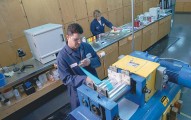Wittmann Battenfeld Shows New Sandwich System
Injection molding technology group Wittmann Battenfeld has developed a process for producing sandwich parts, including components with a foamed plastic core. It presented the new system at the Fakuma fair in Germany last month, where the company’s Cellmould structured foam process was used to produce the core.
Sandwich technology is useful for manufacturers needing to produce thick-walled parts, or in applications where regrind material can be used as a filler. A sandwich part comprises a lightweight core and an outer skin which may be made of the same material.
For injection molders, the Wittmann Battenfeld system, which is available on its MacroPower machine series, allows them to produce sandwich parts on a single machine that uses two injection units.
The Austrian group said that in its system, the main injection unit is placed in the standard position (H) at the centre, and the second injection unit is in an angled position behind the H unit, in a Y configuration.
“This arrangement of the aggregates offers numerous advantages, starting with comfortable access to the nozzles and barrel from both sides, which makes maintenance easy and safe, and also facilitates barrel change,” said Wittmann Battenfeld.
As both injection units are in a horizontal position, the overall height of the set-up is low, which makes for easy installation of automation equipment. Low ceilings in production halls do not present a problem, said the company.
There are other advantages of the Y configuration: standard material loaders can be used; and the position of the second unit favours short flow paths.
The central position of the H unit means the machine can also be used for single-component tasks without having to be converted. The molding company simply switches off the second injection unit and deactivates it in the control system. The two units can also be separated by a simple conversion process, thus making it possible to use the machine for standard multi-component applications.
“So the machine is a genuine all-rounder, which can be flexibly adjusted to the injection molder’s specific requirements,” said the company.
Foaming of the core component is an option that can be integrated into the system. Wittmann Battenfeld said it can integrate its in-house Cellmould process for customers, including the complete hardware package needed for foaming. Cellmould is a physical foaming process which uses nitrogen as the foaming agent.
At Fakuma, the sandwich system was shown making Lechuza flower pots from PP with foamed PP for the core component. They were produced on a MacroPower 450/5100H/2250Y machine, using a single-cavity mold supplied by Geobra Brandstätter, based in Germany.
The parts were removed and placed on a conveyor belt by a Wittmann W843 pro robot.
The company also highlighted the system’s newly developed sandwich nozzle which it has designed to be easily cleaned from the front for quick colour changes. The sandwich nozzle can also be rotated by 180˚ to offer a free choice of combinations between individual injection units and nozzle channels, and so the injection units for the main and core components can be exchanged without any problems.
In response to the industry’s growing interest in foamed parts, Wittmann Battenfeld held a symposium on physical foaming at its Meinerzhagen plant in Germany in April. Around 100 guests heard presentations from Wittmann Battenfeld and its partner companies.
Live Cellmould demonstrations at the event included a MacroPower 650/5100 machine molding a lock connector made of PP-TV 20 material, using a 4-cavity mold from Schröder Kunststofftechnik. On an HM 240/1330 machine, a similar thin-walled component was foamed in a 2-cavity mold.
An EcoPower 180 machine produced a seat adjustment bracket with Airmould gas injection technology from Wittmann Battenfeld.

